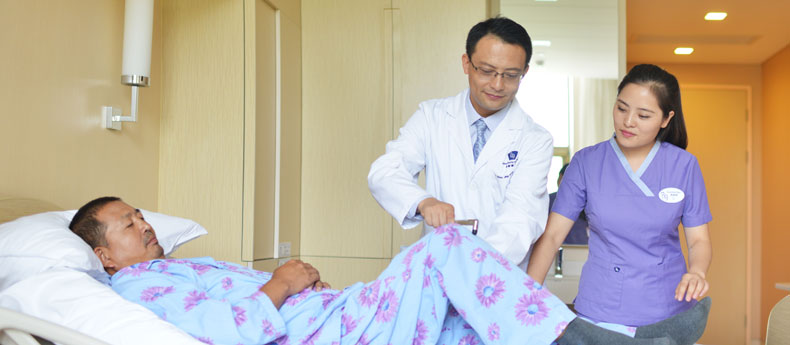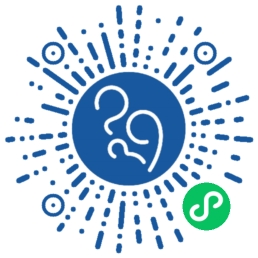
 Neurorehabilitation
Neurorehabilitation
UFH neurorehabilitation includes stroke rehabilitation, traumatic brain injury rehabilitation, and spinal cord injury rehabilitation. We will provide every patient an individualized rehabilitation programs and objectives, in order to recover in a reasonable period to complete the rehabilitation of the established objectives, to maximize the patient’s rehabilitation results.
Our Clinicians


(中文) 谢欲晓


Kejiang BAI
Rehabilitation Physician, Attending Physician


Ivy SUN
HDU Attending Physician, Associate Chief Physician


Jingsheng ZHOU
Assistant Chief Medical Officer, Chair of the Neurological Rehabilitation Department, Rehabilitation Physician


Mingyue XIAO
Rehabilitation Physician, Attending Physician


Lynn ZHUO
Rehabilitation Physician, Attending Physician
Stroke Rehabilitation
Rehabilitation is an important part of treatment after stoke. The purpose is to help patients get function recovery, regain independence, improve quality of life, and return to society.
The severity of stroke complications and each person’s ability to recover lost abilities can vary widely. However, stroke rehabilitation can usually help achieve the best long-term outcomes.
What’s involved in stroke rehabilitation?
Stroke rehabilitation may include the following activities:
- Strengthening motor skills training to help stroke patients improve muscle strength and coordination, and recover the ability to walk .
- Therapy for communication disorders to help stroke sufferers regain lost abilities in speaking, listening, writing and comprehension.
- Mobility training including learning to use walking aids, such as a walker, cane or a plastic brace to stabilize and assist ankles.
- Range of motion therapy which uses exercises and other treatments to help lessen muscle tension(spasticity) and regain a fuller range of motion.
- Psychological evaluation, including assessing cognitive skills, counseling with a mental health professional, participating in a support groups, and using medicines if needed.
- Constraint-induced therapy, which restricts the use of an unaffected limb while practicing moving the affected limb, forcing stroke sufferers to use the affected arm or leg, thereby improving its function.
- Electrical stimulation, including using electricity to stimulate weakened muscles, causing them to contract and thereby helping with muscle re-education.
When should stroke rehabilitation begin?
Stroke rehabilitation should begin as soon as possible after a stroke. The first priority is to stabilize an individual’s medical situation and get life-threatening conditions under control. Doctors also take measures to prevent another stroke and limit any stroke-related complications. Once these steps have been taken, it’s common for stroke rehabilitation to start during theintensive care hospital stay. The sooner a person begins stroke rehabilitation, the more likely he or she is to regain lost abilities and skills.
How long does stroke rehabilitation last?
The duration of the stroke rehabilitation period needed depends on the severity of the stroke suffered and its related complications. While some stroke survivors recover quickly, most stroke survivors need some form of stroke rehabilitation long term, possibly months or years after their stroke. Each individual stroke rehabilitation plan will change during recovery as skills are relearned and as needs change.
Post-stroke rehabilitation can be a long process, and sometimes an individual can feel down or evenbecome depressed during the process. Such difficulties are common and normal. However, determination and perseverance with the support of good rehabilitation can help patients achieve maximum functional recovery.
Where does stroke rehabilitation take place?
Most stroke patients will begin the rehabilitation process while they are still in the hospital. Depending on each stroke patient’s needs and for the convenience of their family members, those engaging in stroke rehabilitation can choose:
Inpatient rehabilitation that allows a stroke patient to work closely at most hours of the day with our intensive rehabilitation therapy team while they stay in a comfortable inpatient room in our world-class hospital environment.
Outpatient rehabilitation wherebystroke patients can spend several hours a day with our expert team in the outpatient rehabilitation room for their training, while heading home to rest or spending time outside afterwards.
Home-based programs, whereby our expert therapy team designs and conducts a tailored rehabilitation program right in the privacy of your own home, allowingfor greater flexibility. This therapy program may be useful in many situations whereby a stoke sufferer might not need access to some of the world’s most specialized rehabilitation equipment found in our hospital, but rather seeks to work on simple programs in the comfort of their own home.
What factors affect the outcome of stroke rehabilitation?
Because stroke recovery varies from person to person, it’s hard to predict how many abilities might be recovered and how soon. However, in general, successful stroke rehabilitation depends on:
- The severity of the stroke
- An individual’s motivation and willfulness
- The skill of the stroke rehabilitation team
- Cooperation of friends and family — having a good support network can have a large effect on recovery
- Timing of the rehabilitation — the sooner one starts, the better they’ll do
- Ability to stick with rehabilitation activities outside of therapy sessions.
Spinal Cord Injury Rehabilitation
Spinal cord injury rehabilitation can be so challenging that being able to make the right choice is the first step. For patients, it is of great importance to choose a suitable place to undertake a personalized rehabilitation plan with a deeply experienced team, such as what you can find at Beijing United Family Rehabilitation Hospital. Choosing us can make all the difference in the world.
Symptoms
Spinal cord injuries of any kind may result in one or more of the following signs and symptoms:
- Loss of movement
- Loss of sensation, including the ability to feel heat, cold and touch
- Loss of bowel or bladder control
- Exaggerated reflex activities or spasms
- Changes in sexual function, sexual sensitivity and fertility
- Pain or an intense stinging sensation caused by damage to the nerve fibers in your spinal cord
- Difficulty breathing, coughing or clearing secretions from your lungs
Common causes
The most common causes of spinal cord injuries are:
- Motor vehicle accidents. Auto and motorcycle accidents are the leading cause of spinal cord injuries, accounting for more than 40 percent of new spinal cord injuries in the United States each year.
- Falls. Spinal cord injury after age 65 is most often caused by a fall. Overall, falls cause more than one-quarter of spinal cord injuries.
- Acts of violence. As many as 15 percent of spinal cord injuries result from violent encounters, often involving gunshot and knife wounds, according to the US National Institute of Neurological Disorders and Stroke.
- Sports and recreation injuries. Athletic activities, such as impact sports and diving in shallow water, cause about 8 percent of spinal cord injuries.
- Alcohol. Alcohol use is a factor in about 1 out of every 4 spinal cord injuries in the US.
- Diseases. Cancer, arthritis, osteoporosis and inflammation of the spinal cord also can cause spinal cord injuries.
Treatments and rehabilitation
Unfortunately, there’s no way to reverse damage to the spinal cord. But, researchers are continually working on new treatments, including prostheses and medications that may promote nerve cell regeneration or improve the function of the nerves that remain after a spinal cord injury.
In the meantime, spinal cord injury treatment focuses on preventing further injury and empowering people with a spinal cord injury to return to an active and productive life.
Brain Trauma Rehabilitation
Beijing United Family Rehabilitation Hospital provides individualized rehabilitation programs for treating brain injury patients experiencing functional limitations, as well as cognitive, emotional and behavioral abnormalities, in addition to other challenges. Traumatic brain injury (TBI) usually results from a violent blow or jolt to the head or body. An object penetrating the skull, such as a bullet or shattered piece of skull, also can cause traumatic brain injury.
Mild traumatic brain injury may cause temporary dysfunction of brain cells. More serious traumatic brain injury can result in bruising, torn tissues, bleeding and other physical damage to the brain that can result in long-term complications or death.
Our leading TBI rehabilitation program, which includes medical care, nursing, physical therapy, speech therapy, occupational therapy, hydrotherapy,nutrition, traditional Chinese medicine (TCM), hyperbaric oxygen therapy, and a range of other therapies and treatments, is uniquely suited to meet the needs of brain injury patients. As part of our world-class rehabilitation hospital service in Beijing, we provide early rehabilitation treatment for TBI patients dealing with mild to severe brain injuries, and those in-between at varying degrees of injury.
Through our expert treatment programs, patients can achieve the following objectives:
- Maximize alertness and responsiveness to happenings around them
- Develop new cognitive and behavioral strategies to compensate for deficits
- Improve physical function and mobility to enhance the skills needed to perform daily activities
Copyright United Family Healthcare 2014 All right reserved - 京卫网审[2014]第1927号 - 京ICP备13017554号-4 医疗广告审查证明文号:(京)医广【2018】第12-28-1021号





